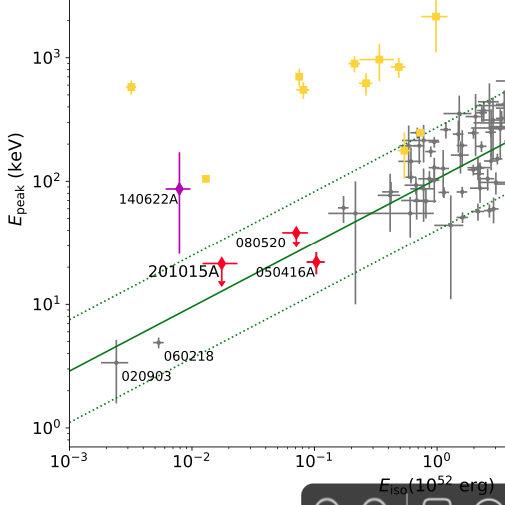The peculiar GRB 201015A
 Gamma-ray bursts (GRBs) are remarkable cosmological events, broadcasting
their violent origins out across the universe. These events are also a
high-priority target for our
GOTO network of telescopes,
which is particularly well suited to following up the (rather
poorly-localised) event from NASA's
Fermi space telescope.
Observations of the optical, X-ray and radio afterglows of these events
can provide important information to understand their origin and
energetics.
Gamma-ray bursts (GRBs) are remarkable cosmological events, broadcasting
their violent origins out across the universe. These events are also a
high-priority target for our
GOTO network of telescopes,
which is particularly well suited to following up the (rather
poorly-localised) event from NASA's
Fermi space telescope.
Observations of the optical, X-ray and radio afterglows of these events
can provide important information to understand their origin and
energetics.
One such event discovered recently is notable for it's feebleness (in a relative sense!) Leicester's Miti Patel made a study of the extensive multi-wavelength data obtained in the followup of GRB 201015A, which is unusually soft and weak for such events. Miti's paper (now published in MNRAS) suggests that off-axis viewing, shock breakout into a denser envelope, or an intrinsically less energetic jet might explain such weak events. While such weak events are rare in part due to the difficulty of detecting them with current instruments, future missions including SVOM and the soon-to-be-launched Einstein Probe can be expected to detect proportionately more examples thanks to their sensitivity and bandwidth.
Labels: 2023, transients

